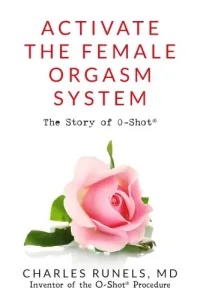- 6584 Poplar Ave Ste 400 Memphis, TN 38138
- info@pac-md.com
- 901-300-6713
The Woman’s 5 Sex-Pleasure Problems & Why Doctors Stay Silent…
- Female Sexual Arousal Disorder (usually but not always accompanies Sexual Desire Disorder). Women who suffer with this may want to have sex but have much difficulty finding the pleasure of arousal. The 5% incidence doesn’t sound like much until you think about it–that’s the same as one in 20!
- Hypoactive Sexual Desire Disorder (Low desire). Remember, that this is not counted a disorder unless it’s disrupting the woman’s life. Around 10% of women suffer with this problem. Important: Suffering with a sexual disorder does not simply make sex not fun. Better sex leads to more energy, more creativity, increased confidence, less depression, and improved overall health.
- Female Orgasmic Disorder: Again around 1 in 20 (or 5%). Here women can become aroused but have much difficulty with orgasm. This can be so frustrating that sex becomes a frustration that they avoid.
- Dyspareunia: Here the woman suffers with real pain with sex (not from decreased lubrication or vaginal spasm). The incidence is from around 1 in 10 to 1 in 5 women. (The above shocking statistics came from Obstetrics & Gynecology April 2011)
- Genital Mismatch can contribute to both Female Orgasmic Disorder & to Dyspareunia
Does testosterone therapy help increase sex drive in women?
What are the pros and cons?
Research shows that the hormone testosterone may improve sexual function in specific groups of women, but data on safety and effectiveness are limited.
The long-term safety of testosterone therapy for women also is unknown. Given the limited research on effectiveness and safety and the number of potential serious side effects, testosterone isn’t a common treatment for sexual dysfunction.
Testosterone therapy might be appropriate if:
- You have reduced sex drive, depression and fatigue after surgically induced menopause, and estrogen therapy hasn’t relieved your symptoms
- You are postmenopausal, taking estrogen therapy and have a decreased sex drive with no other identifiable causes
Long-term safety data on testosterone therapy for postmenopausal women who have a history of breast or uterine cancer or those who have cardiovascular or liver disease is lacking.
Testosterone therapy comes in many forms, such as creams, gels, patches or pills. The method of administration and dose relate to safety risks, so it’s important to discuss pros and cons with your doctor.
Testosterone preparations are not approved by the Food and Drug Administration for use in women. So if testosterone is prescribed, it’s for off-label use.
There are a wide variety of factors that can contribute to sexual dysfunction in women, which often has more than one cause. These factors include vaginal dryness, medication side effects, chronic health conditions, loss of a spouse or partner, lack of emotional intimacy, conflict, stress and mood concerns. A multidisciplinary approach to addressing these causes is typically best for improving this condition, as the data on the safety and effectiveness of testosterone remain limited.

